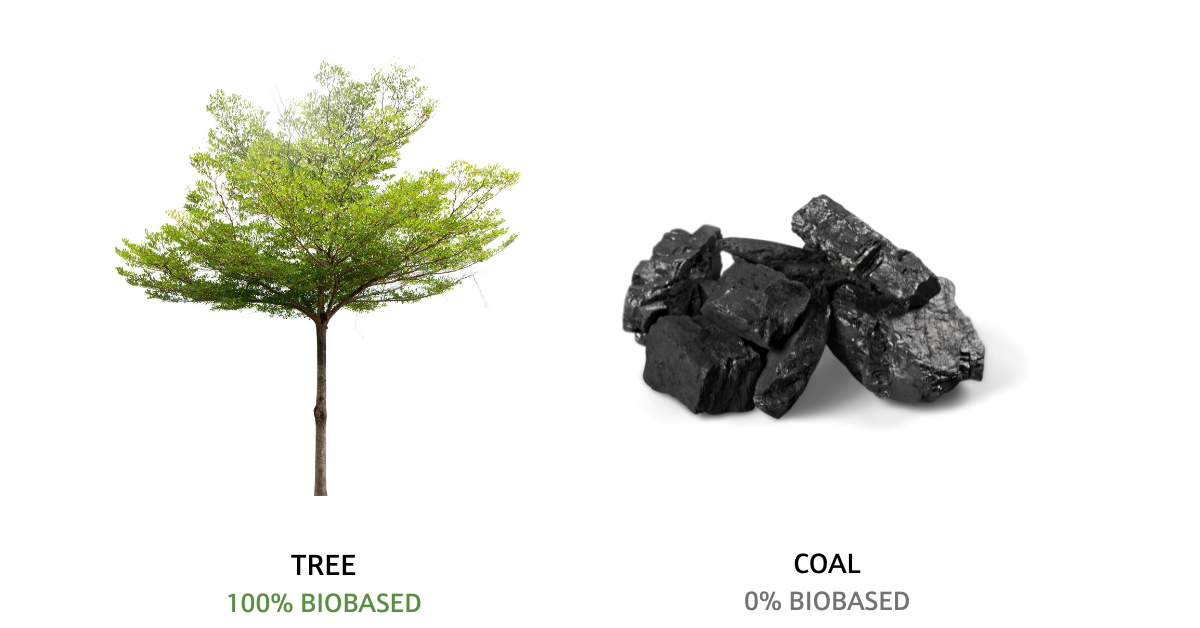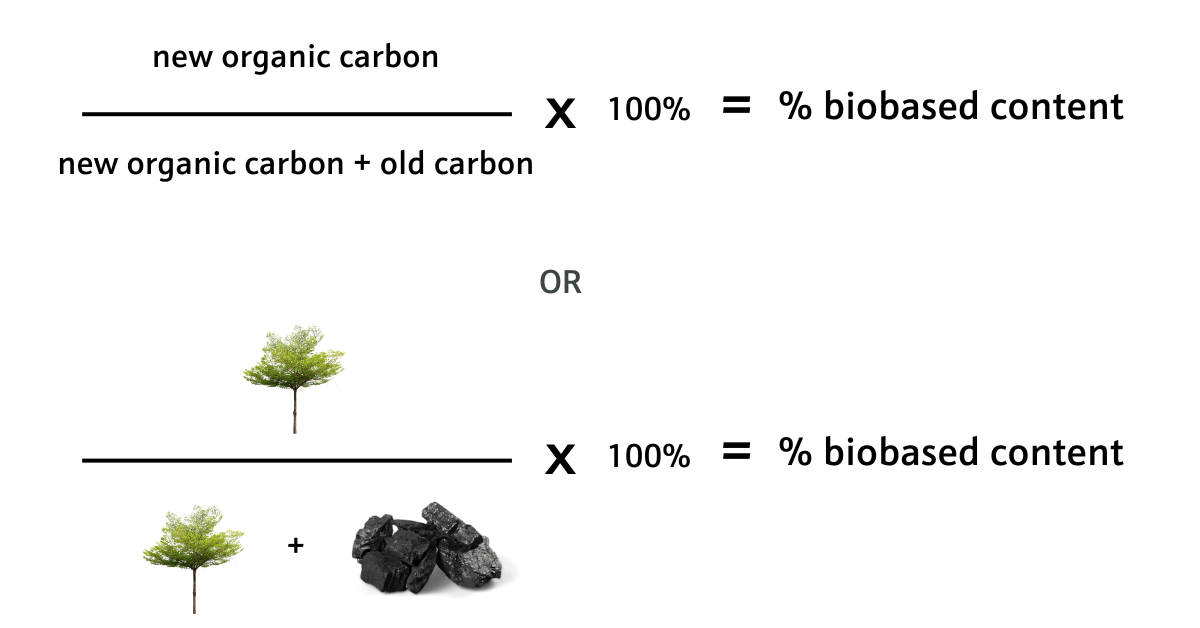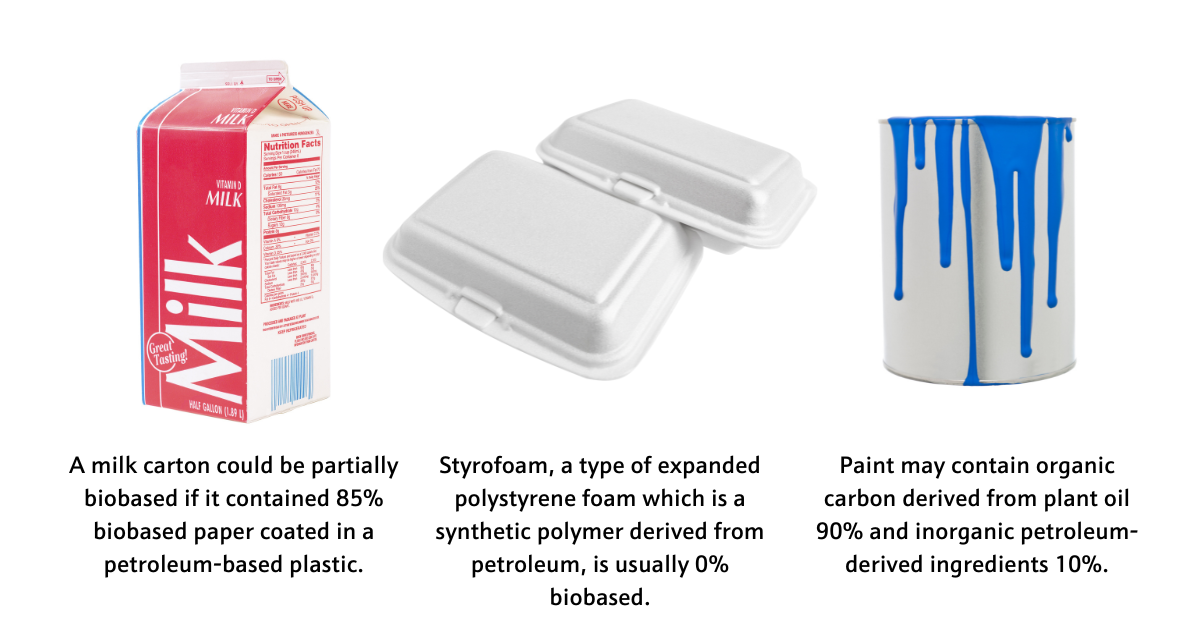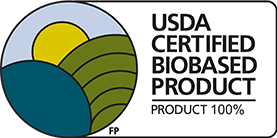
Biobased Products and the USDA BioPreferred Program
In recent years, there has been a growing awareness of the environmental impact of the products we use in our daily lives. From household cleaners to industrial chemicals, consumers and businesses alike are seeking alternatives that are not only effective but also environmentally friendly. Enter biobased products and the United States Department of Agriculture (USDA) BioPreferred Program – a beacon of sustainability in the sea of traditional, petroleum-based products.
What are Biobased Products?
Biobased products are comprised of ingredients or content derived from renewable biological sources such as plants, animals and microorganisms. Unlike their petroleum-based counterparts, which are derived from finite fossil fuel reserves, biobased products offer a sustainable and eco-friendly alternative. Biobased content can be found in a wide range of products with the USDA Certified Biobased Product label, including cleaning agents, lubricants, solvents, plastics and more.
Types of Biobased Ingredients:
- Plant-Based Ingredients: Many biobased ingredients are derived from plants such as corn, soybeans, sugarcane, palm and other agricultural crops. Examples include vegetable oils, sugars, starches and cellulose.
- Animal-Based Ingredients: Some biobased ingredients come from animal sources, such as beeswax, lanolin (from wool) and collagen (from bones and skin).
- Microbial-Based Ingredients: Microorganisms like bacteria, yeast and fungi can also produce biobased ingredients through fermentation processes. Examples include biosurfactants, enzymes and biopolymers.
Understanding Biobased Content
The USDA measures biobased content by “how much ‘new’ or recent organic carbon is in an object or substance, compared to the amount of ‘old’ organic carbon it contains.”

Fig. 1 Two examples of biobased content, adapted from USDA presentation.
How is Biobased Content Calculated?
The USDA calculates biobased content using a method outlined in ASTM D6866, which measures the percentage of carbon in a product derived from renewable biological sources. This method involves analyzing the ratio of radiocarbon (carbon-14) to total carbon in the product.
The higher the percentage of carbon-14, the greater the biobased content of the product. This analysis provides a quantitative measure of the amount of renewable biomass-derived carbon present in a material or product.

Fig. 2 Calculation of biobased content.
How is organic carbon defined?
Organic carbon refers to carbon that is bound within organic compounds, which are compounds containing carbon atoms bonded to hydrogen atoms and other elements such as oxygen, nitrogen, sulfur and phosphorus. Organic carbon is found in living organisms, as well as in decaying organic matter such as plants, animals and microorganisms.
Is organic carbon the same kind of organic as produce at the grocery store?
No, organic carbon is not the same as organic produce found at the grocery store.
Organic carbon refers to carbon that is present within organic compounds, as explained earlier. It is a scientific term used to describe the presence of carbon in molecules derived from living organisms or organic matter.
On the other hand, organic produce refers to agricultural products that are grown and produced following specific guidelines and regulations set by organic certification bodies.
Organic produce is typically cultivated without the use of synthetic pesticides, herbicides, fertilizers or genetically modified organisms (GMOs). Instead, organic farming practices focus on utilizing natural methods such as crop rotation, composting and biological pest control to maintain soil health and fertility.
While both terms involve the concept of organic matter, they refer to different contexts and industries. Organic carbon is a scientific term used in fields such as environmental science and soil chemistry, whereas organic produce pertains to the food industry and consumer products certified as meeting organic standards.
Can a product be partially biobased?
Yes, products can indeed be partially biobased. A product is considered partially biobased if it contains a mixture of biobased and non-biobased ingredients or materials. In such cases, the biobased content of the product is typically expressed as a percentage of the total content.
Partially biobased products are common in various industries, including cosmetics, cleaning products, packaging materials, textiles and construction materials. For example, a cleaning product may contain biobased surfactants derived from plant oils along with other non-biobased ingredients. Similarly, packaging materials may incorporate biobased polymers or coatings alongside conventional plastics.

Fig. 3 Examples of partially-biobased products (milk carton, paint) and a 0% biobased product (styrofoam container).
Partially biobased products offer a way to harness the benefits of renewable resources while still meeting performance requirements or cost considerations. They can contribute to reducing the environmental footprint of products, decreasing dependence on fossil fuels and promoting sustainability in various sectors.
Consumers interested in supporting biobased products can look for labels or certifications indicating the biobased content of the product, such as the USDA Certified Biobased label in the United States or equivalent certifications in other regions. These labels provide transparency and assurance regarding the renewable content of the product.
What is The USDA BioPreferred Program?
 The USDA BioPreferred Program is a government initiative launched by the USDA to promote the use and purchase of biobased products. The program aims to increase the demand for biobased products, reduce reliance on petroleum-based products, and support the development of a biobased economy.
The USDA BioPreferred Program is a government initiative launched by the USDA to promote the use and purchase of biobased products. The program aims to increase the demand for biobased products, reduce reliance on petroleum-based products, and support the development of a biobased economy.
Key aspects of the USDA BioPreferred Program
Mandatory Purchasing Requirements
Federal agencies and their contractors are required to give preferential consideration to biobased products when making purchases. This means that if a biobased product meets the agency’s performance, availability and cost requirements, it must be selected over non-biobased alternatives.
Voluntary Labeling Initiative
The USDA BioPreferred Program also includes a voluntary labeling initiative that allows manufacturers to label their products as “USDA Certified Biobased.” This label indicates to consumers that the product contains a certain percentage of biobased content, as determined by USDA testing and certification procedures.
Product Categories
The BioPreferred Program encompasses a wide range of product categories, including cleaning products, lubricants, construction materials, personal care items and more. Each product category has specific requirements and guidelines for certification as biobased.
Biobased Product Certification
To qualify for the USDA Certified Biobased label, products must undergo testing and certification to verify their biobased content. The percentage of biobased content required for certification varies depending on the product category.
Benefits for Manufacturers
Participating in the USDA BioPreferred Program can provide several benefits for manufacturers. It allows them to differentiate their products in the marketplace, access new markets and customers who prioritize sustainability and potentially qualify for government procurement contracts.
Environmental and Economic Impact
By promoting the use of biobased products, the USDA BioPreferred Program aims to reduce greenhouse gas emissions, decrease dependence on fossil fuels and stimulate rural economies by supporting agricultural and forestry industries.
Overall, the USDA BioPreferred Program plays a significant role in advancing the development and adoption of biobased products in the United States. It provides incentives for both producers and consumers to choose sustainable alternatives to traditional petroleum-based products, contributing to a more environmentally friendly and economically resilient future.
Benefits of Biobased Products and Content
What are the Environmental Benefits of Biobased Products?
- Reduced Carbon Footprint: Biobased products are typically carbon-neutral or have a lower carbon footprint compared to their petroleum-based counterparts. By using renewable resources, we can reduce greenhouse gas emissions and combat climate change.
- Resource Conservation: Unlike fossil fuels, which take millions of years to form, renewable biological resources can be replenished relatively quickly. By using more biobased products, we can help conserve finite resources for future generations.
- Biodegradability: Many biobased products are biodegradable, meaning they can be broken down by natural processes into harmless substances. This reduces the accumulation of waste in landfills and minimizes environmental pollution.
- Promotion of Rural Economies: The production of biobased products often relies on agricultural or forestry resources, providing economic opportunities for rural communities. By supporting the biobased industry, we can help stimulate local economies and create jobs in rural areas.
Advantages of Using 100% Biobased Ingredients for Manufacturers
- Streamlined Certification Process: Ingredients that are already certified as 100% biobased have undergone testing and verification to confirm their biobased content. When manufacturers use these certified ingredients in their products, it can streamline the certification process for the final product. This is because the biobased content of the ingredient has already been established, making it easier to calculate the overall biobased content of the finished product.
- Faster Label Approval: Using certified 100% biobased ingredients can potentially expedite the approval process for the USDA Certified Biobased label. Since the biobased content of the ingredient is already verified, manufacturers may face fewer hurdles and delays in obtaining certification for their products. This can help them bring their biobased products to market more quickly and efficiently.
- Market Differentiation: Having a product with a 100% biobased certification allows manufacturers to stand out in the marketplace. It provides a clear and credible indication to consumers that the product is derived entirely from renewable biological sources, distinguishing it from conventional products that may contain petroleum-based ingredients.
- Consumer Trust and Preference: In today’s environmentally conscious marketplace, many consumers prioritize sustainability and are actively seeking out products that align with their values. By choosing ingredients that are certified as 100% biobased, manufacturers can enhance consumer trust and preference, attracting environmentally conscious consumers who are willing to pay a premium for sustainable products.
- Compliance with Regulations and Standards: Certification as 100% biobased demonstrates compliance with regulatory requirements and industry standards related to sustainability and environmental stewardship. This can help manufacturers mitigate risks associated with non-compliance and ensure that their products meet the expectations of government agencies, retailers and other stakeholders.
- Access to Government Procurement Opportunities: Some government agencies and organizations give preferential treatment to biobased products, particularly those that are certified as 100% biobased. Manufacturers with biobased ingredients meeting this certification may have a competitive advantage when bidding for government procurement contracts or participating in programs such as the USDA BioPreferred Program.
- Enhanced Brand Reputation: Incorporating 100% biobased ingredients into products can contribute to a manufacturer’s overall brand reputation as a leader in sustainability and innovation. It demonstrates a commitment to environmental responsibility and corporate social responsibility, which can enhance brand loyalty and attract environmentally conscious consumers.
- Reduced Environmental Impact: By using ingredients that are certified as 100% biobased, manufacturers can contribute to reducing their environmental footprint. Biobased ingredients are derived from renewable resources, which helps reduce reliance on finite fossil fuels, minimize carbon emissions, and promote biodiversity conservation.
Overall, certification of an ingredient as 100% biobased provides manufacturers with a competitive advantage in the marketplace, enhances consumer trust and preference and demonstrates a commitment to sustainability and environmental stewardship. It represents a valuable investment in building a more resilient and environmentally friendly business model for the future.
How To Use Sophorolipid Biosurfactants in Biobased Products
The first step in creating biobased products is to source renewable biological resources such as plants or microorganisms. These resources serve as the raw materials for producing biobased ingredients like sophorolipid biosurfactants.
Sophorolipid biosurfactants are typically produced through a fermentation process using specific strains of yeast or bacteria. During fermentation, the microorganisms convert sugars or fatty acids from renewable sources into sophorolipids. These sophorolipids are then extracted and purified from the fermentation broth.
Once purified, sophorolipid biosurfactants can be incorporated into various formulations to create biobased products. These formulations may include cleaning agents, personal care products, industrial lubricants and more. Sophorolipids act as effective surfactants, emulsifiers and foaming agents, making them versatile ingredients for a wide range of applications.
What are the Benefits of Using Biobased Ingredients Like Sophorolipid Biosurfactants?
Environmental Sustainability
Biobased ingredients are derived from renewable resources, reducing reliance on finite fossil fuels and minimizing carbon emissions. Sophorolipid biosurfactants are biodegradable, meaning they break down into harmless substances in the environment, further reducing pollution and waste accumulation.
Health and Safety
Sophorolipid biosurfactants are non-toxic and biocompatible, making them safer alternatives to synthetic surfactants commonly found in traditional products. They are gentle on the skin and pose minimal risks to human health and the environment.
Performance and Versatility
Sophorolipid biosurfactants exhibit excellent surfactant properties, including surface tension reduction, emulsification and foaming capabilities. They can be tailored to meet specific performance requirements and are suitable for a wide range of applications in industries such as cleaning, cosmetics, agriculture and bioremediation.
Incorporating biobased ingredients like sophorolipid biosurfactants into the production of biobased products represents a sustainable and innovative approach to meeting the needs of consumers while minimizing environmental impact. By harnessing the power of nature, we can pave the way for a greener, healthier future.
Amphi® Line of Sophorolipid Biosurfactants
Locus Ingredients’ Amphi® line of sophorolipid biosurfactants is 100% biobased and certified for use in products carrying the USDA Certified 100% Biobased Product label. Amphi® sophorolipids are also always:
- Readily biodegradable
- Non-GMO
- Palm oil free
- Nontoxic and contain no 1, 4-dioxane, ethylene oxide or other Proposition 65 banned chemicals of concern.

Biobased Product Trivia: Test Your Knowledge!
Think you’ve got what it takes to outsmart the competition and uncover the eco-friendly secrets behind your favorite products? Let’s find out!
- True or False: Biobased products are derived from renewable biological sources such as plants, animals and microorganisms.
- Which type of products typically have a lower carbon footprint: biobased products or non-biobased products?
- What term describes the ability of biobased ingredients to be broken down by natural processes into harmless substances over time?
- Biobased products are often perceived as safer alternatives due to their lower toxicity compared to non-biobased products. True or False?
- What government program encourages the use of biobased products through mandatory purchasing requirements for federal agencies and voluntary labeling initiatives?
- Which type of products support sustainable agriculture, forestry and other industries: biobased products or non-biobased products?
- Biobased products contribute to the reduction of waste accumulation in landfills and minimize pollution in waterways and ecosystems due to their _______________ properties.
- Many consumers prefer to support companies that demonstrate a commitment to _______________ and environmental stewardship, which can be achieved through the use of biobased ingredients.
Check Your Answers. How Did You Do?
- Answer: True. Biobased products are indeed derived from renewable biological sources such as plants, animals, and microorganisms.
- Answer: Biobased products typically have a lower carbon footprint compared to non-biobased products.
- Answer: Biodegradability. This term describes the ability of biobased ingredients to be broken down by natural processes into harmless substances over time.
- Answer: True. Biobased products are often perceived as safer alternatives due to their lower toxicity compared to non-biobased products.
- Answer: The USDA BioPreferred Program encourages the use of biobased products through mandatory purchasing requirements for federal agencies and voluntary labeling initiatives.
- Answer: Biobased products support sustainable agriculture, forestry, and other industries.
- Answer: Biodegradability. Biobased products contribute to the reduction of waste accumulation in landfills and minimize pollution in waterways and ecosystems due to their biodegradable properties.
- Answer: Corporate social responsibility. Many consumers prefer to support companies that demonstrate a commitment to corporate social responsibility and environmental stewardship, which can be achieved through the use of biobased ingredients.
Conclusion: Embracing a Sustainable Future with Biobased Products and Ingredients
In conclusion, the use of biobased products and ingredients offers a pathway to a more sustainable future. From reducing our reliance on fossil fuels to promoting economic growth in rural communities, the benefits of biobased products are clear.
By participating in initiatives like the USDA BioPreferred Program and choosing biobased products, we can all play a role in protecting the planet and building a healthier, more resilient society.
So, the next time you’re shopping for cleaning supplies or industrial chemicals, remember to look for the USDA Biobased Product label and choose biobased products – because when it comes to sustainability, every choice matters.
Which Natural Surfactants Are Superior: Biosurfactants Or Bio-Based Surfactants?
READ MORE: What’s The Difference Between Biosurfactants And Bio-Based Surfactants?
Biosurfactants are a type of bio-based surfactant. Unfortunately, some manufacturers refer to their bio-based surfactants as biosurfactants, further confusing the terminology. It’s important to note that all biosurfactants are bio-based surfactants, but not all bio-based surfactants are biosurfactants.



